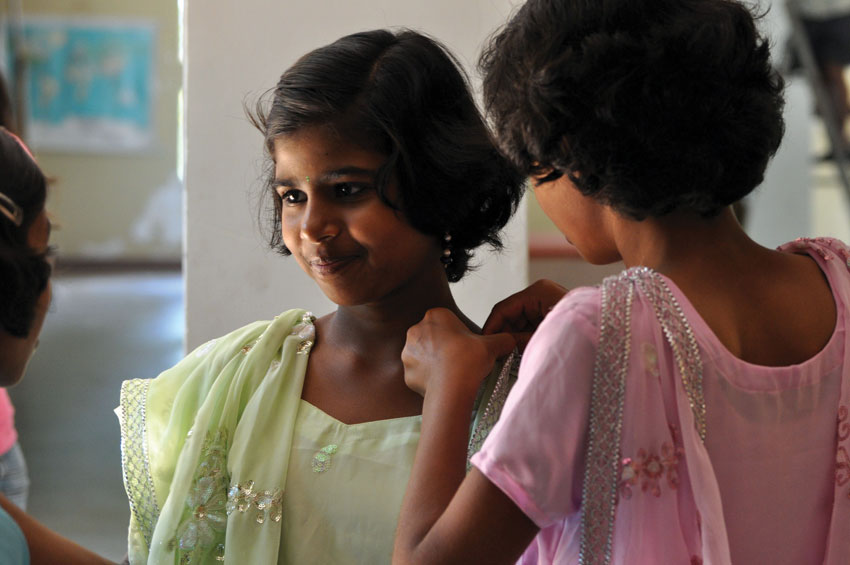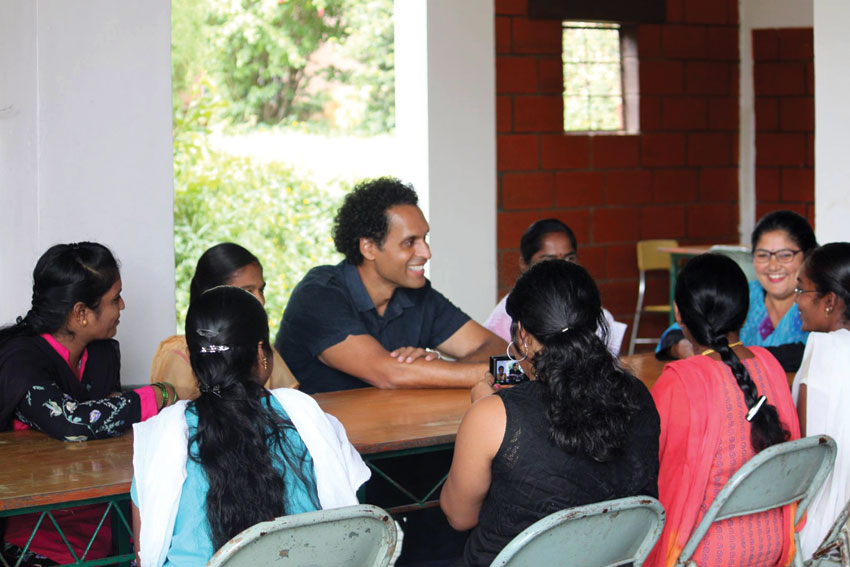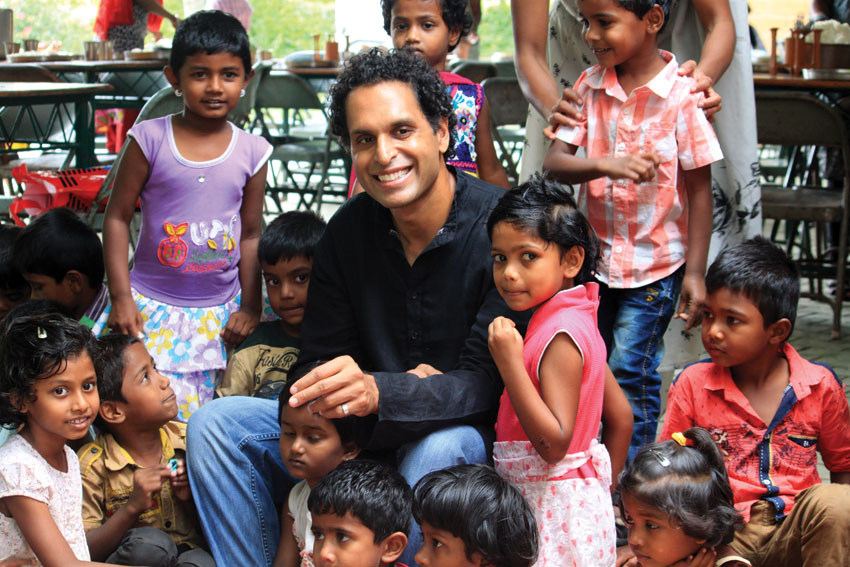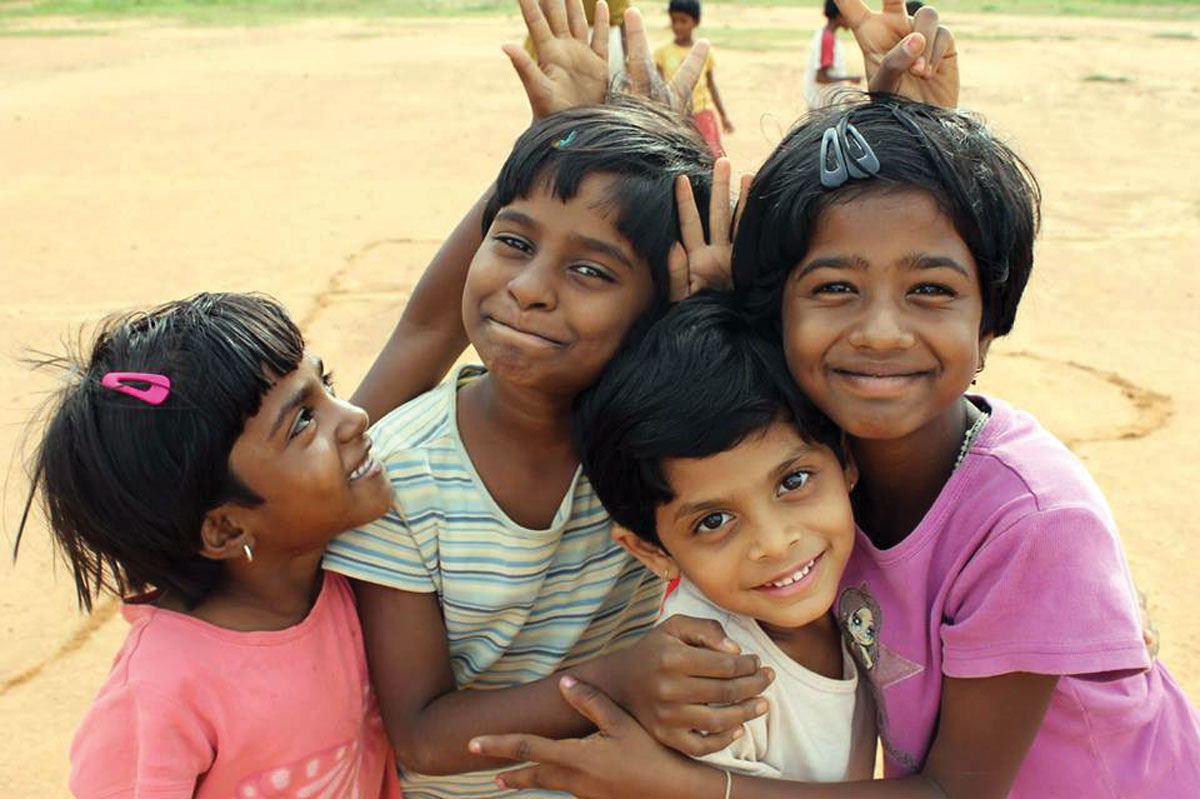From the Slums to Fortune 500 Companies: Indian School’s Success in Poverty Alleviation
Students of Shanti Bhavan; Shanti Bhavan takes in impoverished children at age 4 and guides them through their formative years. (Shanti Bhavan Children’s Project)
In 1997, an Indian-born businessman, haunted by the economic hardships and social inequality rampant throughout his motherland, founded a radical school to fight poverty. It was his dream from his days as an officer in the Indian army. While traveling throughout the nation, he observed that the poorest families were trapped in an unbreakable cycle; they were born into poverty and denied education and opportunity. And so, it would continue, for generations. That extraordinary businessman is my father, Dr. Abraham George and the school he founded is Shanti Bhavan, writes Ajit George.
Shanti Bhavan was created with the idea that any child can succeed given the right opportunities, and that if you model strong values and civic engagement to them, there would be no limit to what they would achieve. To that end, Shanti Bhavan provides India’s most disenfranchised children something they would never have otherwise: a safe home, nice clothes, nutritious meals, medical care, and 17 years of high-quality academics, leadership development, and professional guidance, completely free of charge. It’s a unique model of poverty alleviation, previously untested in the non-profit world. Now Shanti Bhavan is the subject of a new Netflix docuseries called Daughters of Destiny, which depicts how its innovative method of intervention empowers five young women to break the cycle of generational poverty.

The key is that Shanti Bhavan is about more than just education. We often think of poverty as the opposite of wealth, and that therefore the solution is simply greater income, but poverty is both social and financial—a potent and corrosive combination of discrimination and economic deprivation. And it is multifaceted. The children face rampant alcoholism in their families, physical and sexual abuse, forced early marriage, chronic illness, high suicide rates, generational debts, and other destructive elements that curtail upward mobility.
To break this cycle, you need to do more than teach a child to read. You even need to do more than find them a job.
Teaching a child to read or giving them access to primary school education isn’t enough to allow them to compete with better-educated children for the good jobs that lead to meaningful change. To break out of poverty, children need firm academic grounding beginning at a young age; they need spaces where they can feel safe and loved, and where they can study without distraction; they need access to basic utilities like electricity and working bathrooms; they need proper nutrition and health care; and they need exposure to global attitudes and values to prepare them for the modern workplace. Most importantly, they need mentorship, guidance, reinforcement of self-esteem, positive role models, and aspirational goals that motivate them.

No other program gives this level of education, this length of intervention, or this amount of support. Shanti Bhavan’s goal is not simply to educate children, but to empower change-makers who uplift their families and communities by paying forward the generosity and opportunities given to them.
Over the past 20 years, Shanti Bhavan has seen tremendous success with its unique model of radical intervention. Shanti Bhavan graduates have a 100% university acceptance rate, work at companies such as Amazon, Deloitte and Ernst & Young, and contribute 20-50% of their salaries to their families and communities—helping end the poverty that has trapped India’s poorest communities for generations.
The story of Shanti Bhavan and its challenges and triumphs is brought to life on the small screen through Daughters of Destiny. Directed by Academy-Award winning filmmaker Vanessa Roth, and scored by Academy and Grammy-Award winning music composer A.R. Rahman, this Netflix series is a raw, intimate portrayal of India’s social underclass. It’s our hope that it will inspire supporters to donate to Shanti Bhavan’s 2017 capital campaign to build a second school.

Twenty years ago, when my father first founded Shanti Bhavan, one question was on everyone’s lips: “Can it work?” Our children’s successes prove that not only does it work, it has exceeded most everyone’s expectations! A second school doubles Shanti Bhavan’s immediate impact, but the long-term effect those children will have on the region is immeasurable. This is how you break the cycle of poverty.
To learn more about Shanti Bhavan or to donate, please visit shantibhavanchildren.org.


